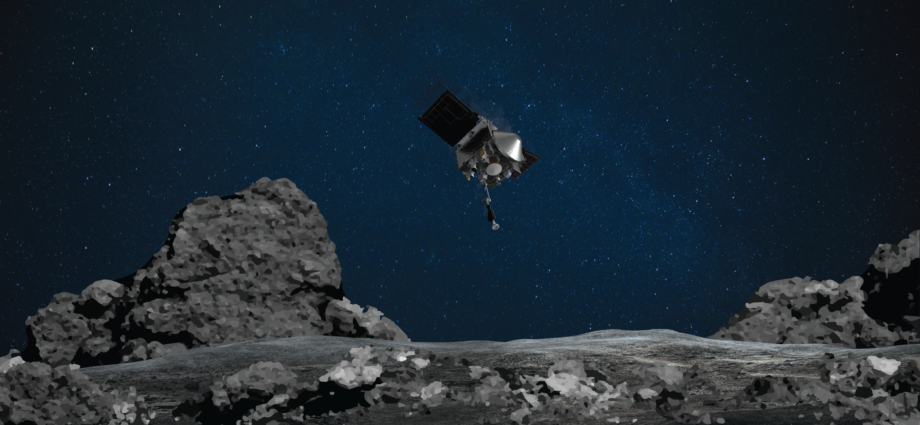
Why the mission is important and how Brian May, lead guitarist from legendary rock band Queen, helped with the project
by David Bass
September 26, 2023
Nasa’s Osiris-Rex capsule is shortly to return to Earth carrying a vital cargo — dust samples from the asteroid Bennu that could provide scientists with important clues to the origins of the universe.
The spacecraft is set to release a capsule with material from asteroid Bennu onto the Utah desert on September 24 — arriving at speeds as fast as a bullet. Osiris stands for Origins, Spectral Interpretation, Resource Identification, Security Regolith Explorer.

“When we get the 250g (9oz) of asteroid Bennu back on Earth, we’ll be looking at material that existed before our planet, maybe even some grains that existed before our Solar System,” says Prof Dante Lauretta, the principal investigator on the mission.
Helping with this project is Brian May, who accompanies his rockstar duties by helping out NASA.
Brian has provided his amazing ability in “stereo imaging,” where he can align two pictures of an object taken from different camera angles to give a 3D view. This image was used to plan out the best possible sites for samples on Bennu and decide the safest for the mission.
“I always say you need art as well as science,” Sir Brian told BBC News. “You need to feel the terrain to know if the spaceship is likely to fall over or if it will hit this ‘rock of doom’ that was right on the edge of the eventually chosen site, called Nightingale. If that had happened it would have been disastrous.”
Why is the mission so important?
As the dust from the asteroid could potentially be from before the formation of our solar system, the information could help scientists answer some of the most fundamental questions in science, such as how the Earth was formed and why it is habitable.
The biggest question that could be looked into with the research covers the origins of life itself — what is the source of the organic molecules that make up all life on Earth?
The asteroid’s contents are important because they never underwent property-changing processes as samples from other surfaces such as Mars. Osiris-Rex will arrive with an estimated 8.8 ounces or 250 grams of material, which is just over a cupful.
The sample was originally collected by the spacecraft from Bennu on October 20, 2020. Studying it will help unlock questions about the early solar system.
Brian May – Rock Star and Astronomer
Before the legendary success of the Rock band Queen, whose memorable hits include “We Will Rock you,” “It’s a Kind of Magic” and “Bohemian Rhapsody,” their songs were used in a West End musical and at the Live Aid benefit concert in 1985 their performance was considered as one of the best in rock music history.
Brian Harold May, a member of the band, was more than a musician: he was also an eager student of Physics, studying to be an astronomer at Imperial College London where he went on to graduate with honours in 1968.
In 2008 he returned to study being granted a Ph.D., and went on to work on projects in the field of planetary science and helping out with the Bennu mission.
These include collaborating with NASA as part of the New Horizons mission, to Pluto in 2015 and work with the Voyager Station project.
Future work
Brian’s work on the Bennu asteroid continues in the form of a book in which he is a co-author, titled “Bennu 3D: Anatomy of an Asteroid” and that was recently published (in July 2023). This book, the world’s first complete (and stereoscopic) atlas of an asteroid, is the result of close collaboration between Brian May and Osiris-Rex mission leader Dante Lauretta. Lauretta’s colleagues include Carina Bennett, Kenneth Coles, and Cat Wolner, as well as Brian May and Claudia Manzoni, who became part of the ultimately successful effort to find a safe landing site for sampling.
The text presents the data collected by the mission so far, and the stereo images have been meticulously created by Manzoni and May from original images collected by the Osiris-Rex cameras.
It is expected that the book will be updated to include final findings from the Osiris-Rex mission once all the images and data collected have been analyzed. Expect to get new insights into the asteroid’s physical and chemical properties and a fascinating, potentially ground-breaking look at its potential implications for the origins of life.
Subscribe to our newsletter.
This article was originally published on IMPAKTER. Read the original article.

